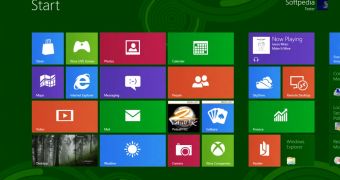When released to the general public in a final flavor, Windows 8 will bring along a new flavor of Internet Explorer, with new features and capabilities packed inside.
Dubbed Internet Explorer 10 (IE10), the new browser was made available as a preview in the pre- and beta versions of Windows 8, offering users the possibility to take advantage of some of the new capabilities that Microsoft packed it with.
Among them, we can count the possibility to easily share links and other content with friends and contacts, all with only a few taps.
The capability is powered by the Share charm in Windows 8, which was designed to enable users to easily send content between applications on their PCs.
Unlike before, it does not require copying the link from the address bar to share it, nor will users have to leave the page they are on to send the wanted content to someone else.
When using the Share charm, IE10 will create two data formats to include the relevant content, namely the URI of the current page, and some HTML to offer a preview of what is being shared.
“Of course, if you aren’t sharing the whole page, but rather, some content that you’ve highlighted, IE10 will share the HTML of your selection instead of the URI and the link preview,” Alex Feldman, Program Manager, Internet Explorer, explains in a blog post.
“In this case, sharing a selection would be called an ‘explicit’ share, and does not include the link. This post describes the link sharing case, how IE10 participates in the Windows 8 Share contract using HTML, and how Web developers can create link previews with just a few meta-tags.”
To benefit from the sharing capabilities of IE10, applications will have to offer support for the HTML data format for sharing, while the browser offers the link preview.
These link previews include a title, image, and description for every shared link, which should make it easy for apps to recognize site content. For that, however, developers will need to implement the support for the feature with their application.
“Windows 8 Share charm handles the coordination between the source and target apps to provide an integrated sharing experience across all apps. This removes the need for target and source apps to be aware and coordinate between each other,” Alex Feldman continues.
He also notes that IE10 was designed so as to provide web developers with the possibility to easily connect to Windows 8 Share. Sites can define the info that is included in link previews, but that requires some extra meta-data markup.
“On the other end of the share contract, target apps that support the HTML data format can get the full experience of contextual Web hyperlinks without having to parse a single site. The end result is a rich, modern, and fluid sharing experience, from end to end,” Feldman also notes.
Some additional info on how developers can take advantage of these sharing features in IE10 in Windows 8 can be found in the aforementioned blog post.

 14 DAY TRIAL //
14 DAY TRIAL //